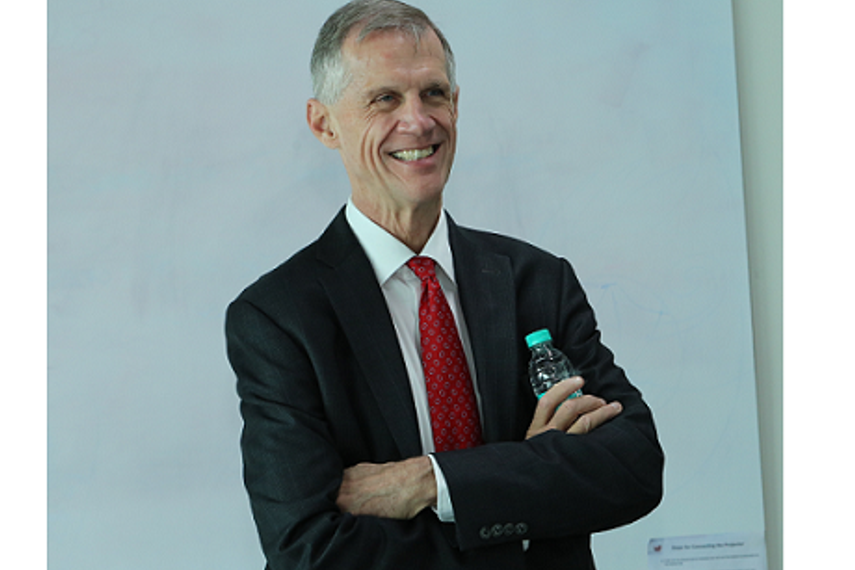
The Indian School of Design and Innovation (ISDI) Mumbai's campus was inaugurated and the institute's association with Parsons School of Design was formalised in Mumbai on 9 October.
David Van Zandt, president, The New School – Parsons School of Design, New York, said, “Design is engaging boardrooms; creating a problem solving ethos in a corporation. Design schools are not only a major source of new talent for the economy's rapidly growing creative sector, but are critical catalysts for entrepreneurship. Universities must embrace interdisciplinary learning on both the undergraduate and graduate levels. Even for students who are not focusing in the arts, some experience and literacy with design will prove crucial in an increasingly creative economy. While design is a concept that is often assumed to be about engineering and high-tech applications, it is only a small part of its focus. Design, broadly defined, is an interdisciplinary approach to problem-solving that seeks to develop more effective products, environments, and organizations.”
He added, “At its heart, design is about understanding people and how they interact in the larger world. By leveraging design thinking and its intersections with other disciplines, universities will continue to serve as the incubators of creative innovation.”
Speaking with Campaign India, Zandt noted the relevance of design that goes beyond just focusing on the aesthetic appeal of a product, "Brands will now go to create user experiences in retail shops because to get the edge in business you have to have something that people want."
He cited interior designing as an example of this change and how design and innovation has gone beyond being about just the product. "It (interior design) is an area where people have woken up to the reality that you need to understand human behaviour to be able to design something well. The old idea of an architect or an interior designer designing something pretty and giving it to you doesn't work anymore. We know many interior design firms who've hired designer anthropologists, people who can do both, ethnography as well as make recommendations. In fact, we're offering a Masters in New York in design and ethnography to give designers ethnographic skills. One of the things we do in Mumbai, New York and Paris with the students is to send them out to see the culture around them. We need to train them to notice the right thing(s)."
"It is not a specific culture that's important but being able to understand the difference between cultures – what they can bring from one culture to another to help with a design solution. We're not training them to work in a particular culture, that's not the idea. We're providing them with a capacity to understand that they're in a different market, to analyse a market and come up with the solution to approach that market. It helps, to some extent, to be in a large city like Mumbai or New York because in those two places there are pockets that can be accessed, they may not necessarily be identical to world cultures but it at least gives you that comparison and differentiation ability."
Mumbai has had its fair share of design education culture grown over the years. Zandt spoke about what separates ISDI from the rest in today's world, "It's the broad-based, more intellectual approach to design that we're providing given how critical it is to be sensitive to user experience these days."
He also spoke about the evolved needs of the industry itself. "The industry is looking for people who are very creative to begin with, can think, are extremely flexible in how they work given that they won't always work alone and have to be comfortable working in a team. They have to not be afraid of other's expertise; it may be a doctor or an engineer they work with next, they need to be able to work with them effectively."
Creative excellence and innovation aside, employers are facing an issue in to find talent that understands the creative as well as the business aspects of work. Zandt explained, "The gap that i hear about from employers is that, no matter how creative the person is, if they don't understand the business then they're not going to be able to advance. That's design within constraints – real world constraints. You have to understand it is a business, you have to generate revenue, you have to keep your expenses down etc. That's one skill that employers tell me makes a difference." ISDI, to be able to tackle this, does have management education rolled in in its programmes.
On a world stage, being able to innovate in terms of technology and design is imperative for any brand to be able to survive, Zandt elaborated. He said, "Earlier, what was happening was India and China were taking Intellectual Property from the US and then being very efficient in manufacturing – India in generic drugs and China in hardware. One example is Samsung, an extremely efficient manufacturing company but then they started to fall behind which led them to really focus on design. They created a whole design division of a thousand designers who were not assigned any particular product line. What they do instead is work across the board. Samsung realised they needed to have very good products that work well at all levels. Some people claim that they copied Apple but they've maintained quality and that is what matters."


.jpg&h=268&w=401&q=100&v=20250320&c=1)

+announced+that+Sandeep+Mehrotra%2c+head+of+ad+sales+-+network+channels%2c+will+exit+the+company+for+personal.jpg&h=268&w=401&q=100&v=20250320&c=1)
.jpg&h=268&w=401&q=100&v=20250320&c=1)



.jpg&h=268&w=401&q=100&v=20250320&c=1)
